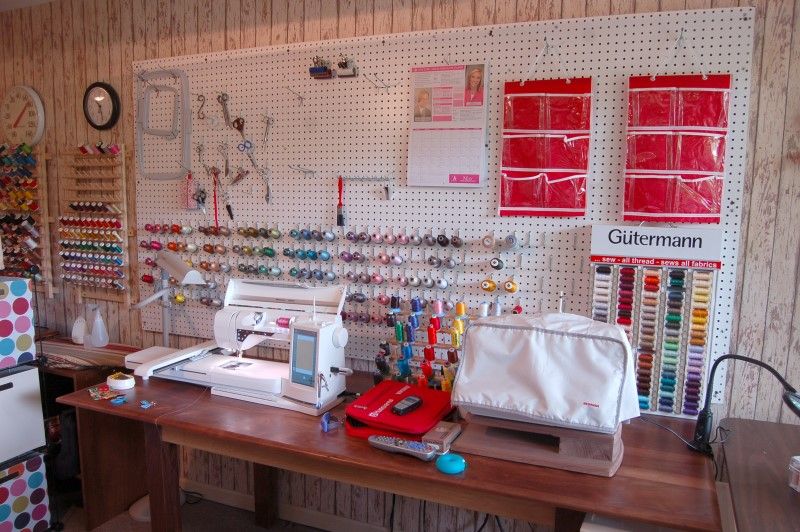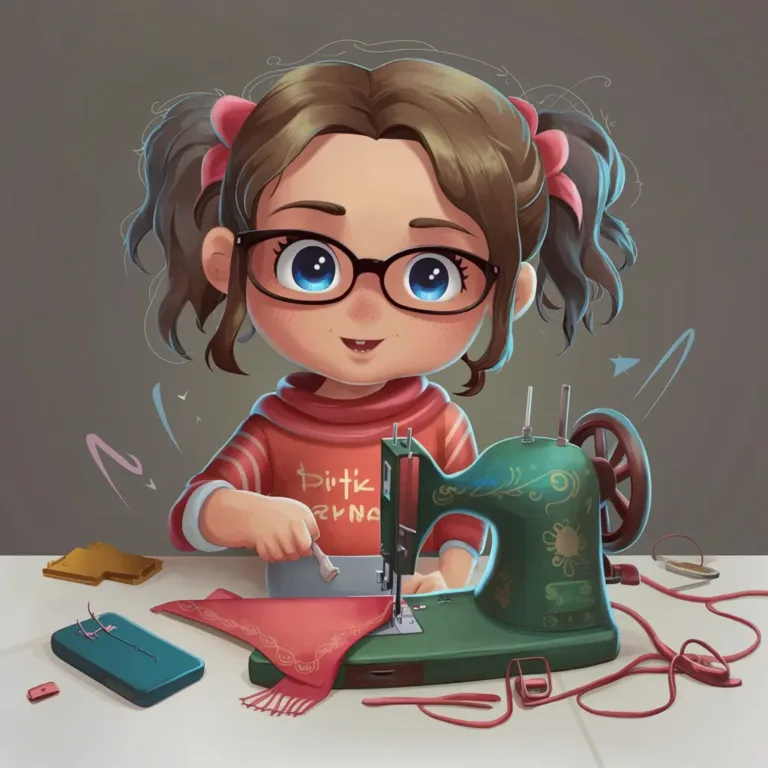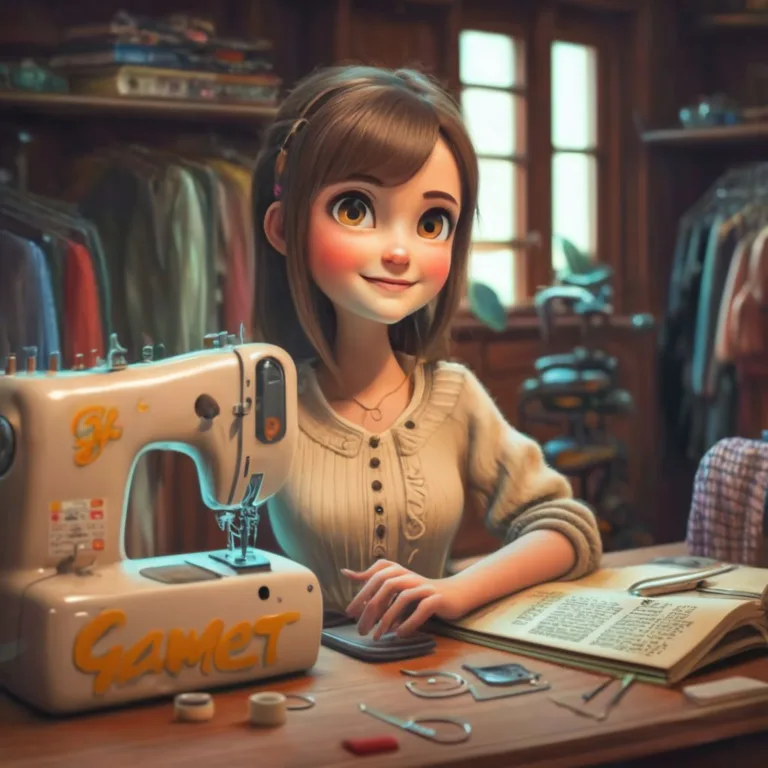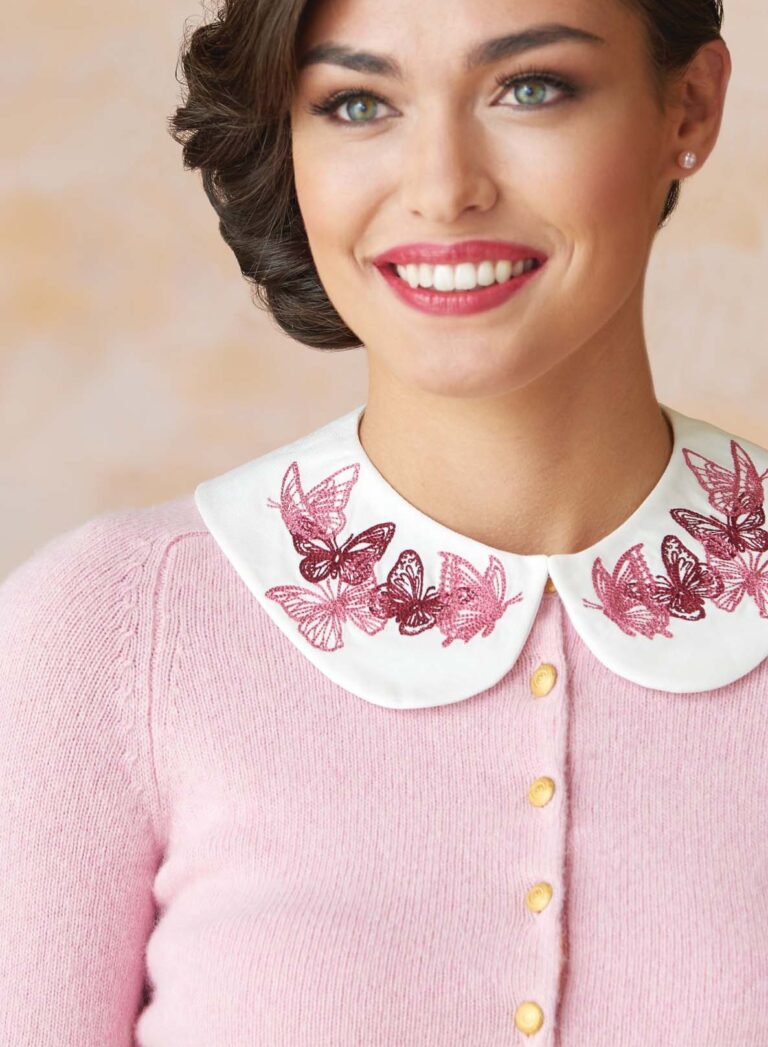Whether you reclaim a room after children have moved out, only have a corner of the
family room, or you’re custom designing your dream studio, there are some things that
all sewers need to make their work go smoothly.
Electricity
You need power in several areas of your sewing room—for machines, iron, task lighting and computers. Dedicated circuits are ideal, and a surge protector is essential to avoid damaging equipment.
Try to avoid stretching extension cords across traffic areas to avoid accidents. Wall
mounted power strips allow you to plug in multiple things in a single area. Consult an
electrician to add outlets if needed, and explain what will be plugged into them.
.Lighting
Good lighting is important to sewing success. Not only do you need general
room lighting, but task lighting as well. Tabletop lights work well to illuminate
individual work areas for sewing machines, sergers and computers. Daylight bulbs
allow for true-color viewing.
Cutting Table
Depending on the room size and orientation, try to find space for a dedicated cutting area. If you’re a garment sewer, it should be large enough to allow for a folded 60″ fabric width; if you’re a quilter, a 45″ fabric width is sufficient; length depends on the available space.
The height of the cutting surface is key to comfort. It should be 3-4″ below your
elbow height for using scissors, and 6-8″ below for using a rotary cutter. If you use both, pick a midpoint.
A perfect tabletop is a hollow core door from the hardware store, or a padded sheet of
plywood. Take advantage of the space underneath by placing it on a chest of drawers
or a sturdy shelf pair.
Flooring
Sewers often disagree about the best flooring options. Some prefer hard-surface
flooring like wood, tile or vinyl; others prefer soft-surface flooring like carpeting
and rugs. The choice depends on your sewing and cleaning style—pins are easier
to find on hard-surface flooring, but carpeting provides warmth if you sew in
your bare feet! If you plan to do other related crafts in the same room, consider floor cleaning options. Dyes, paints, glues, etc. are harder to remove from carpeting than most hardsurface floorings.
StorageThe biggest concern most sewers have is
storage
—not only for the burgeoning fabric stash, but for the cadre of notions and tools. It’s good to be able to find the things you need.
There is no one perfect storage system for sewers—some people prefer plastic tubs
for everything, others like to see what they have and don’t want it behind any cabinet
doors or in boxes. It’s important to keep your sewing things clean and neat, as well
as away from sunlight which can damage and fade fabrics.
If you choose covered storage like tubs and bins, be sure to label them clearly so you
know what’s inside. The “out of sight, out of mind” saying can cause you to duplicate
purchases simply because you can’t find something.
Computer Station
If you’re downloading embroidery designs directly to your machine, you’ll need space to have a computer (laptop or desktop) near your sewing station, and power for the computer. Even if you don’t download designs, your machine may utilize online updates, or you can use your computer to find free patterns, online technique resources, etc.
Embroidery Station
Perhaps the most used area of your sewing room is the space with your sewing machine(s) and serger. It’s important to have a comfortable chair that’s the correct height for your body and sewing surface height. Your chair should allow you to sit at the machine in a straight
and upright position, with knees bent at a 90° angle and elbows the same. Your forearms should be parallel to the floor. The ideal height of your machine bed is the
distance from your elbow to the floor.
If you prefer a sewing machine surface that’s tilted, purchase a special mat or stand for this purpose. It supports the machine base at a 10-15° angle to reduce stress on arms and neck.
Don’t skimp on your sewing chair purchase. Select one with an adjustable height, adjustable back support, arms and a seat with good support for your body and legs. Wheels on the chair allow for easy movement around the room, and from machine to computer to
iron, depending on the configuration.
Related Posts
Discover relevant articles, tutorials, and tips to improve your skills and explore new techniques.
Stay inspired and connected to our embroidery community.







I want to say that this article is amazing,
great written and include almost all vital infos.
I’d like to look extra posts like this .
This is my first time visit at here and i am
actually happy to read all at single place.
Oh my goodness! Impressive article dude! Many thanks, However I am
having difficulties with your RSS. I don’t understand why I cannot join it.
Is there anybody else getting similar RSS problems? Anyone that knows the solution will you kindly respond?
Thanx!!
Hey there! I’ve been following your blog for a while now and finally got the bravery to go ahead and give you a shout out from
Porter Tx! Just wanted to tell you keep up the fantastic job!
I am sure this article has touched all the internet users, its really
really fastidious post on building up new blog.
Fantastic goods from you, man. I’ve understand your stuff previous to
and you are just too wonderful. I really like what you’ve acquired
here, certainly like what you’re stating and the way in which you say it.
You make it entertaining and you still care for to keep it sensible.
I cant wait to read far more from you. This is really a
tremendous web site.